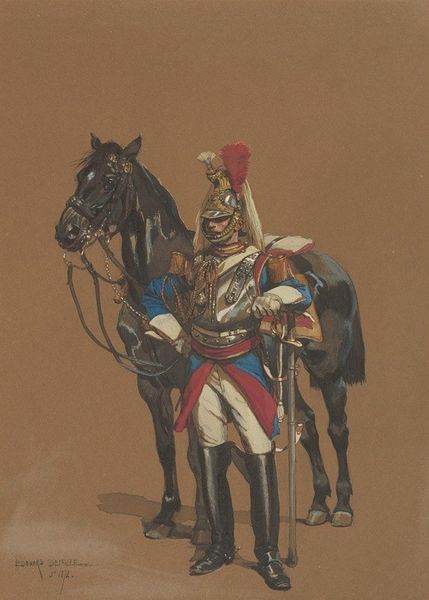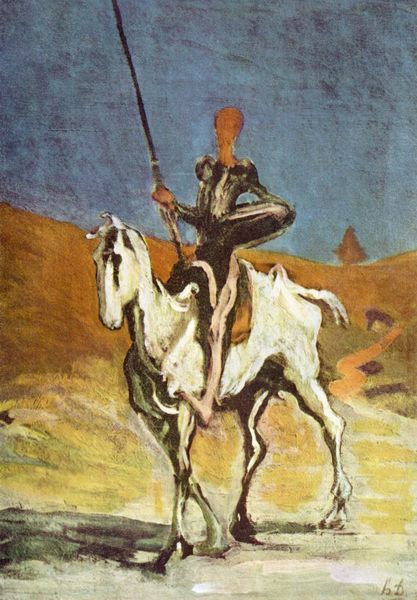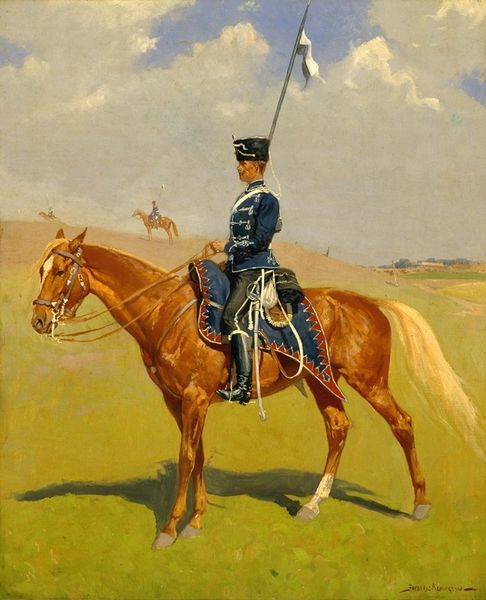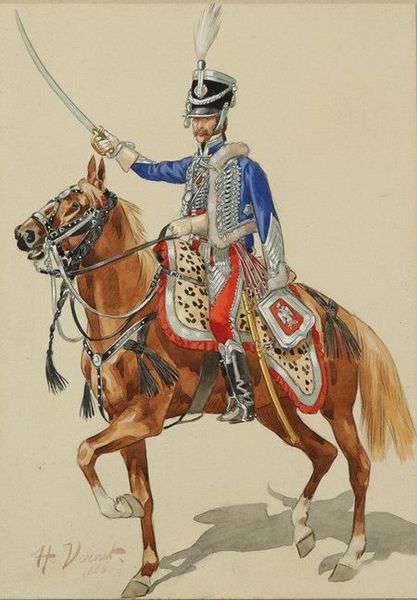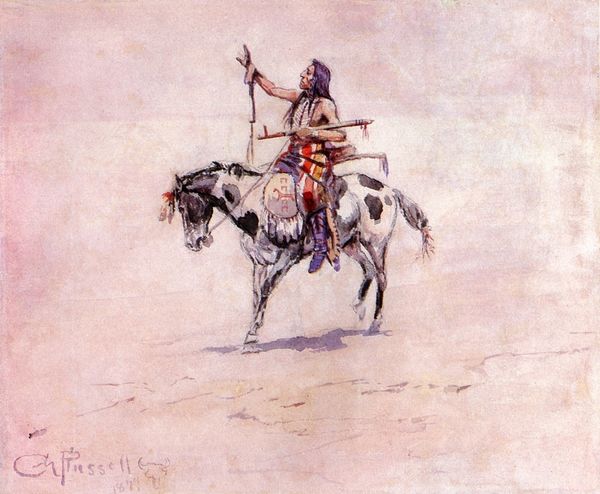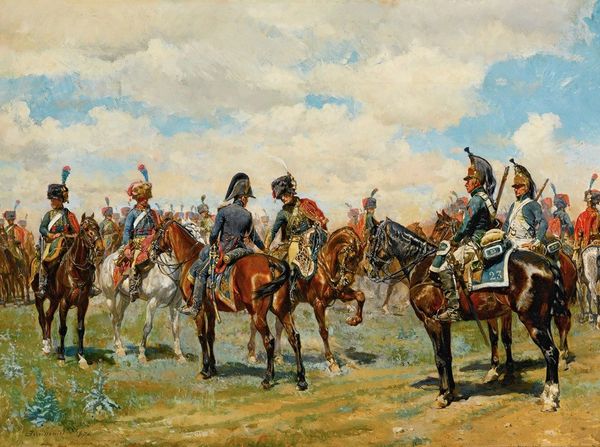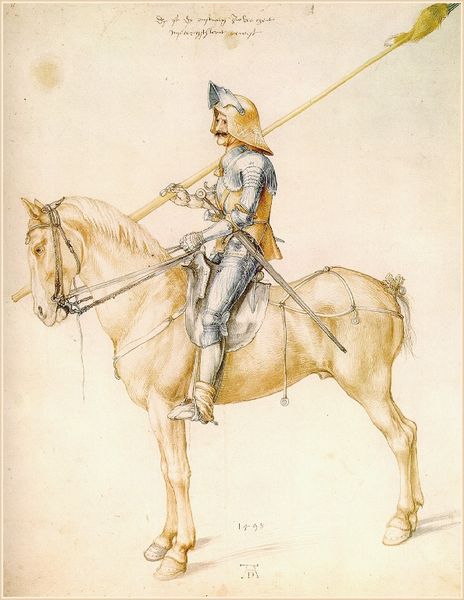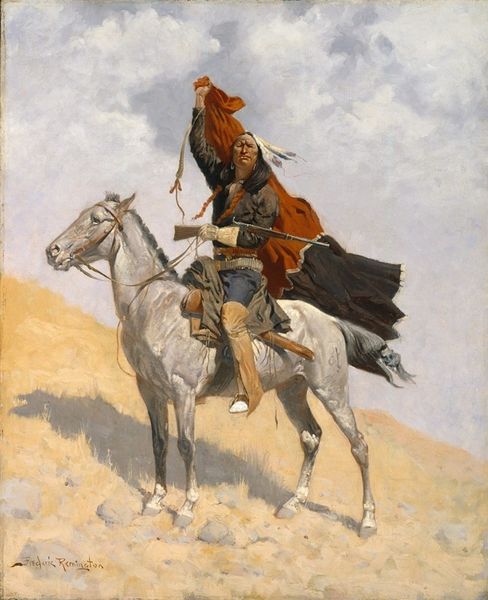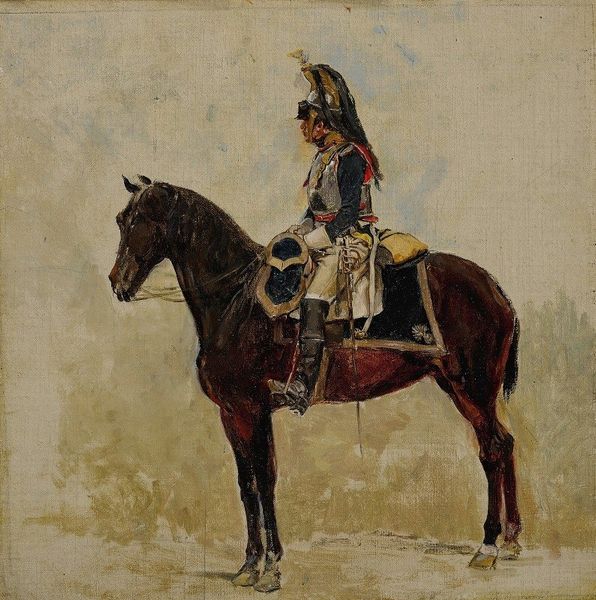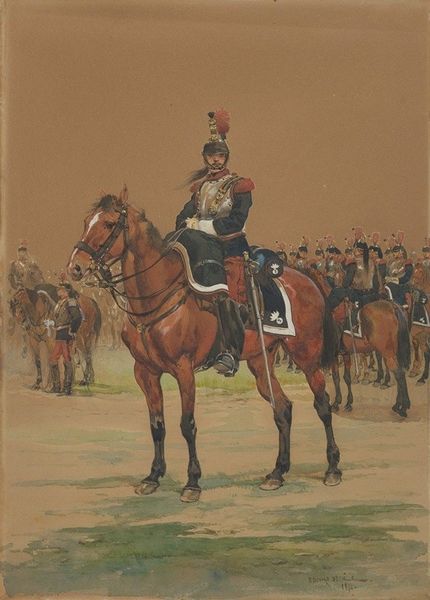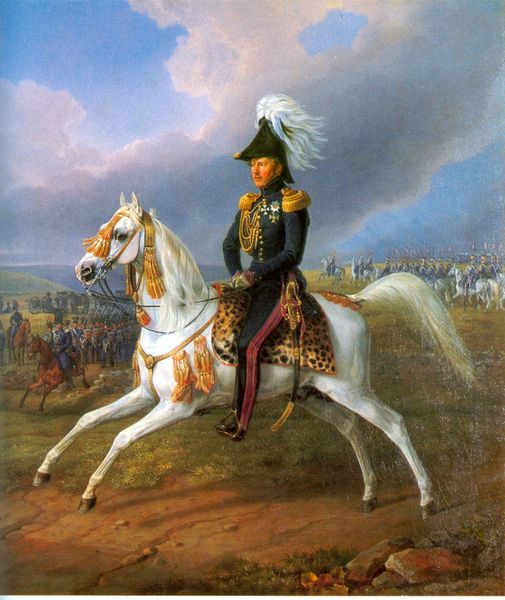
oil-paint
#
narrative-art
#
oil-paint
#
landscape
#
fantasy-art
#
figuration
#
oil painting
#
horse
#
surrealism
#
surrealism
Copyright: Candido Portinari,Fair Use
Editor: This is "Dom Quixote," an oil painting by Candido Portinari, created in 1961. It strikes me as both whimsical and unsettling, the figures elongated and existing within a dreamlike space. How do you interpret this work, considering the symbolism it may contain? Curator: The enduring figure of Don Quixote resonates because he embodies the tension between reality and imagination. Note how Portinari has depicted the windmills – barely there, more like ideas of windmills than actual structures. Don Quixote tilted at them as giants, right? So, what does that tell us about how this painting functions as a cultural artifact? Editor: It shows us how the image has morphed. We know the story, so the slightest visual suggestion is enough to bring the whole narrative into view. He's become a symbol himself, representing… idealism, maybe? Curator: Exactly. And observe how the stark palette – the blues of delusion, the ochres of harsh reality – serve as emotional shorthand. Even the moon, so prominently displayed, could symbolize unattainable dreams, cycles, madness… do you think Portinari deliberately aimed for that multiplicity? Editor: Possibly. He’s playing with our established understanding, the visual signifiers. So the success of the image relies on the viewer bringing something to the canvas as well? Curator: Precisely. It highlights the continuing cultural relevance of the Don Quixote story, each era reinterpreting the image through its own lens. What do you take away from our conversation? Editor: I see how loaded images can be, relying on a shared understanding of cultural symbols and stories that evolve and change over time. It’s fascinating!
Comments
No comments
Be the first to comment and join the conversation on the ultimate creative platform.
